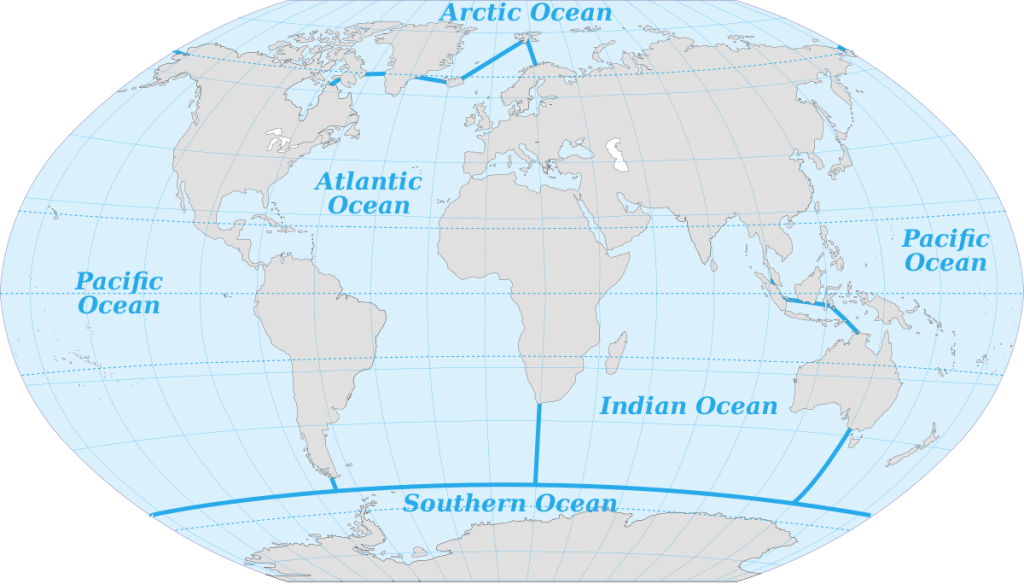Though water covers more than seventy percent of the surface of Earth, which oceans predominate worldwide? When we discuss the top ten biggest oceans in the world by 2025, we are delving into the enormous bodies of water influencing the geography, ecology, and temperature of our planet. Usually smaller and somewhat confined by land, oceans are great, open stretches of saltwater significantly deeper than seas. Knowing this allows us to value the absolute scope of the biggest oceans on Earth. Stretching over 155 million square kilometers, the Pacific Ocean rules supreme and plunges to over 36,000 feet in the Mariana Trench, therefore not only the largest but also the deepest.
Following with a vital commerce route of 106 million square kilometers, the Atlantic Ocean follows; the Indian Ocean encompasses 70 million square kilometers with its warm waters. These behemoths have secrets like the declining ice caps of the Arctic Ocean or the stormy currents around Antarctica of the Southern Ocean. The Pacific by alone comprises more than half of all the ocean water on Earth. Alternatively the Atlantic conceals undersea mountain ranges longer than anything found on land. From rich marine life to record breaking depths, the top ten largest oceans in 2025 have countless beauties just waiting to be discovered. Stay around for the mind boggling facts and whole list!
The Top Ten Largest Oceans In The World 2025
10. Coral Sea, two million square kilometers
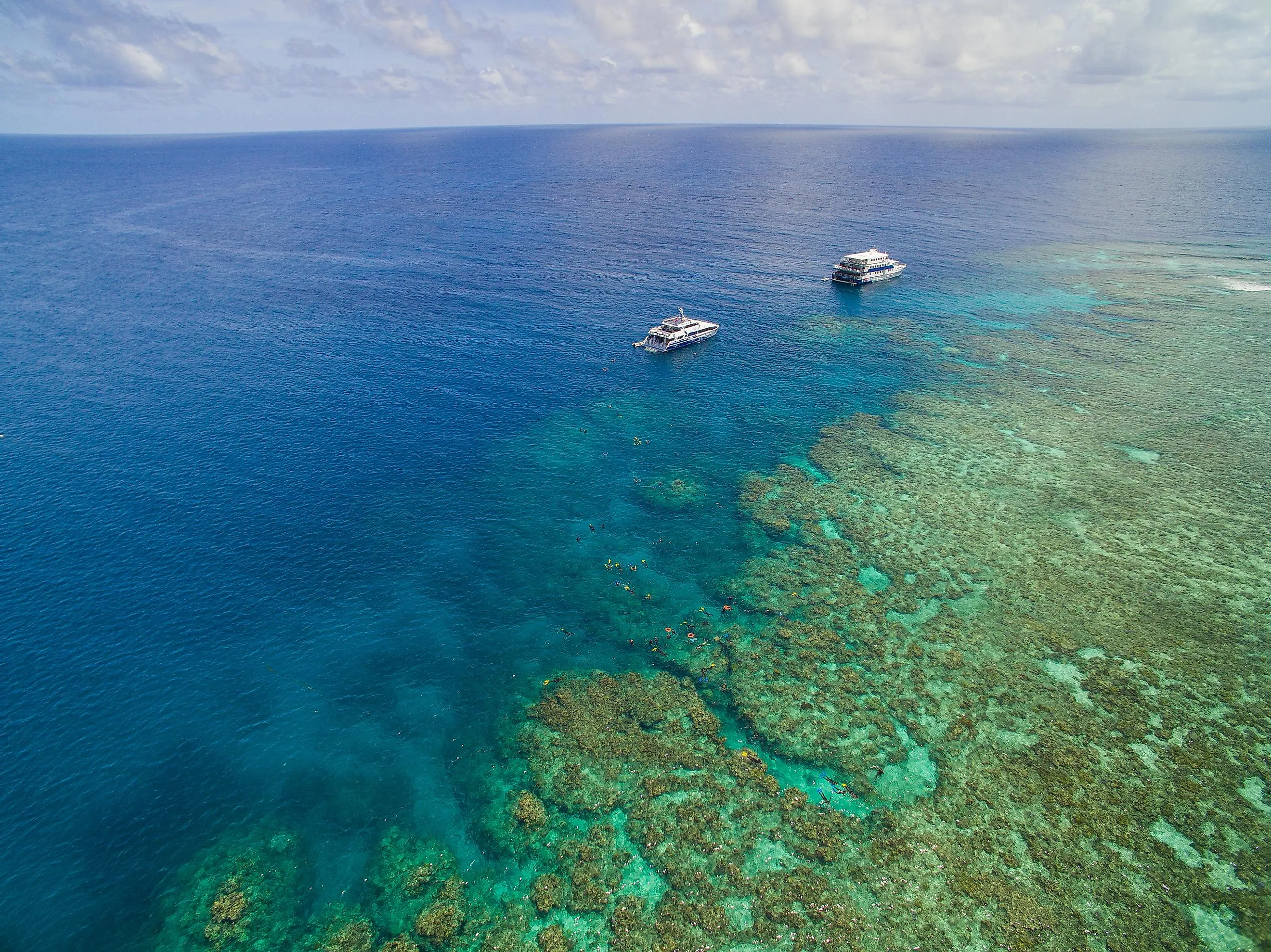
Starting the list, the 2 million square km Coral Sea runs off Australia’s northeast coast in the southwestern Pacific Ocean. Comprising the Great Barrier Reef, the largest coral ecosystem in the world spanning more than 2,300 kilometers with more than 400 coral species, this tropical treasure is It’s a diver’s dream—think of sea turtles, sharks, and vivid fish—whose seas sparkle with aquatic life. With depths average 2,400 meters but falling to 9,140 meters in areas like the New Britain Trench, the borders of the Coral Sea touch Queensland, Papua New Guinea, and the Solomon Islands. Though it’s the smallest on this list, its warm temperature and great biodiversity make it a unique among the largest seas.
9. Caribbean Sea, 2.75 million square kilometers
The Caribbean Sea, which lies tucked inside the Atlantic Ocean system, spans 2.75 million square kilometers next. Framed by Central America, South America, and more than 7,000 islands like Cuba, Jamaica, and the Bahamas it’s a tropical paradise with glistening clean waves and sandy beaches. Though it drops to 7,686 meters in the Cayman Trough, the deepest point in the Caribbean, the water averages 2,200 meters deep. With 9% of the world’s coral reefs and species including manatees and dolphins, this hotspot of biodiversity is Its warm, friendly character attracts millions of visitors annually, therefore confirming its place in the top 10 oceans and seas; trade winds and currents keep it humming with shipping.
8. Mediterranean Sea, 2.97 million square kilometers
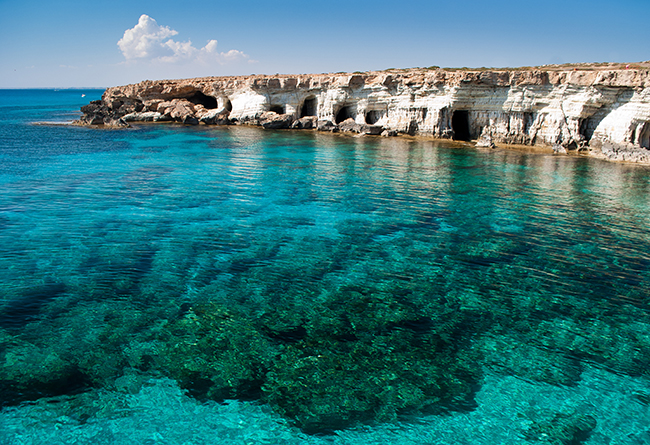
Comprising 2.97 million square kilometers, the Mediterranean Sea ranks eighth among historic gems connected to the Atlantic over the narrow Strait of Gibraltar. Bound by 21 countries Spain, Italy, Greece, Turkey, and Egypt to mention a few it is nestled between Europe, Africa, and Asia. With old trade routes still reflected in contemporary seafaring, its surface area supports a complex tapestry of cultures. Average depth 1,500 meters; but, dive to 5,267 meters off the coast of Greece in the Ionian Sea. Though overfishing and pollution threaten its health, the warm, salted waves of the Mediterranean foster special habitats. Among the largest oceans in this ocean size list, its size and legacy define it.
7. South China Sea, 3.5 million square kilometers

Claims 3.5 million square kilometers in the western Pacific, the South China Sea lands at number 7. Surrounded by China, Vietnam, Malaysia, and the Philippines, this geopolitical flashpoint littered with hundreds of islands like the Spratlys and Paracels spikes territorial conflicts for oil and gas deposits. Rising 1,212 meters deep, it falls to 5,016 meters in the China Sea Basin. With third of the world’s shipping traveling through this sea and its fisheries feeding millions of people, it is a lifeline for world trade. Though their equilibrium is threatened by conflicts and overuse, coral reefs and marine life flourish here. Among the biggest oceans and seas, its importance and dimensions make it a major actor.
6. Philippine Sea, 5.7 million square kilometers
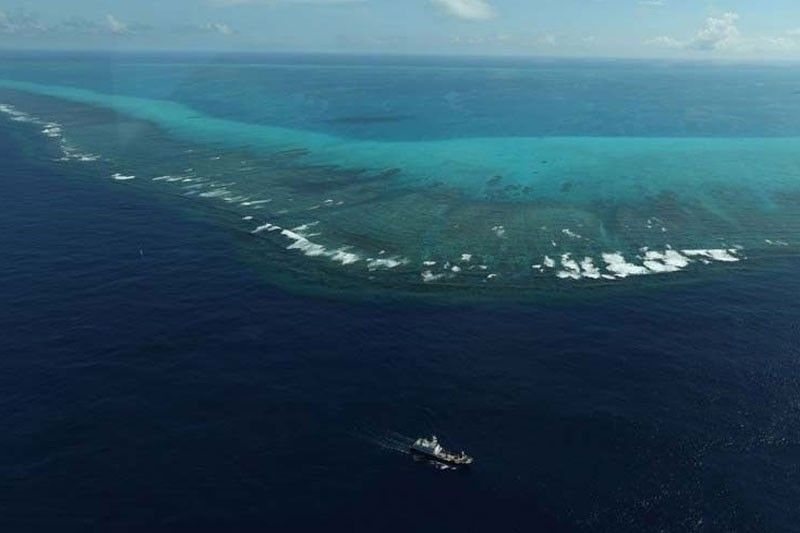
At number six, the Philippine Sea stretches over 5.7 million square kilometers a vast Pacific sea on par with some others in scope. Deep trenches and volcanic islands round it from the Philippine archipelago, Taiwan, and Japan. At 10,540 meters, the Philippine Trench is among the deepest locations on Earth; its average depth is about 4,100 meters. Because of its warm seas, which drive typhoons, storms develop here frequently. From whale sharks to uncommon deep sea life, marine life thrives and its size nearly equal the Arctic Ocean earns it a surprising place in this top 10 oceans list, therefore highlighting the strength of the biggest seas.
5. Arctic Ocean, 14 million square kilometers

With its 14 million square kilometers, the Arctic Ocean ranks as the smallest of the five main oceans. With beaches along Canada, Russia, and Greenland, locked inside the Arctic Circle it touches North America, Europe, and Asia. Sea ice covers most of its surface; climate change is causing yearly shrinkage that exposes more open water. Though it drops to 5,450 meters in the Molloy Deep, it averages 1,038 meters deep. Polar bears, seals, and Arctic salmon call it home; its frozen expanse controls world temperature. Given its size and function in Earth’s cooling mechanism, it ranks among the most important entries in the top seas worldwide.
4. Southern Ocean, 21.96 million square kilometers
With 21.96 million square kilometers around Antarctica, number 4 is the Southern Ocean. Officially identified in 2000, it is defined by the Antarctic Circumpolar Current, the strongest ocean flow of the world linking the Pacific, Atlantic, and Indian Oceans. Depth average: 3,270 meters; down in the South Sandwich Trench, to 7,235 meters. Its cold seas support a delicate food chain with krill, whales, and penguins teeming in them. This is a mariner’s challenge; storms rage here with waves reaching 20 meters. Its unusual position and size help to explain why it ranks in the top 10 oceans a wild frontier in ocean size rankings.
3. Indian Ocean, 70 million square kilometers
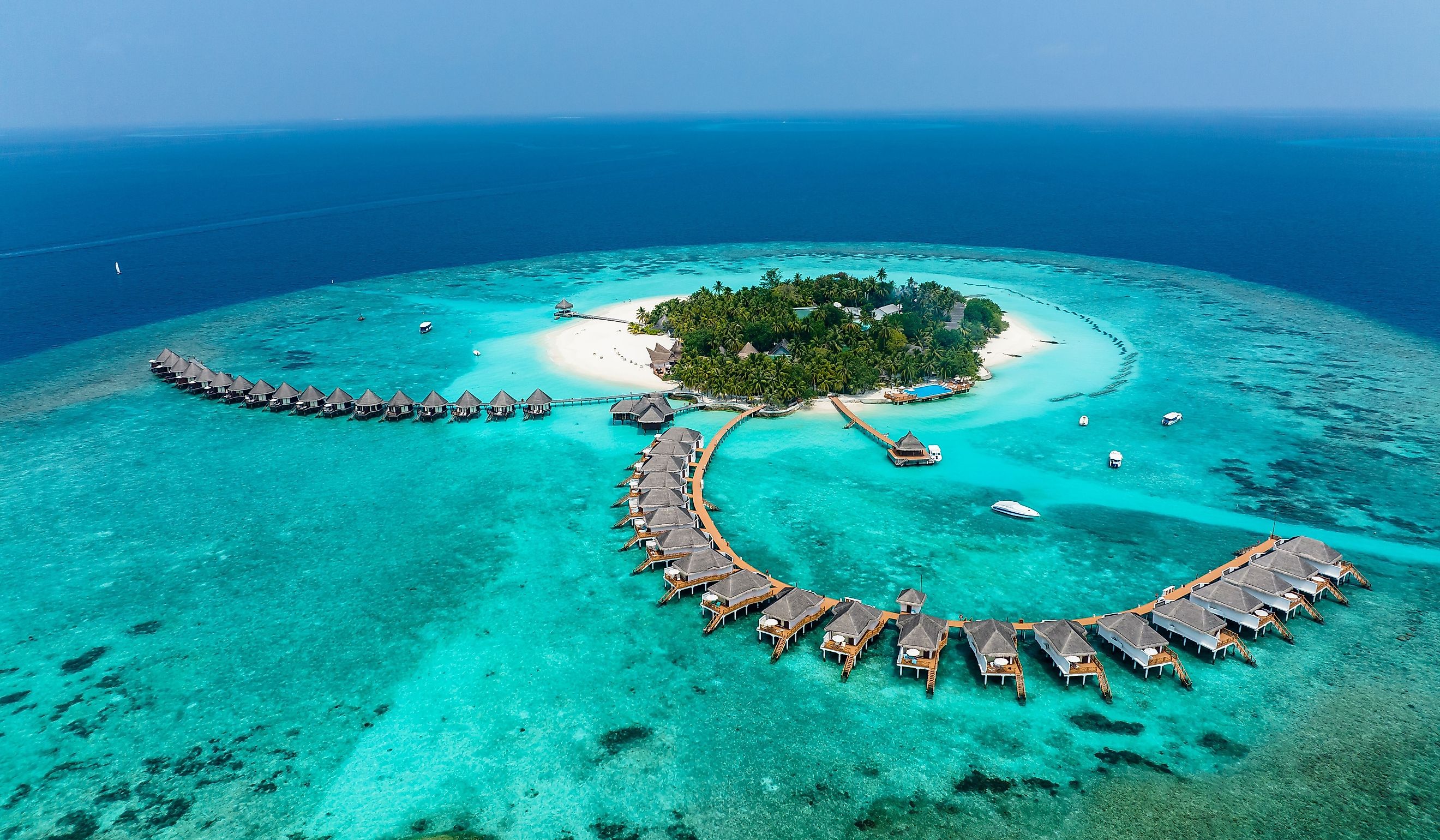
Comprising seventy million square kilometers, the Indian Ocean claims number three. Warm water giant impacting monsoons and world temperature stretches from Africa’s east coast to Australia and from Asia’s south to the Southern Ocean. Its average depth is 3,741 meters; the deepest point, the Java Trench strikes 8,047 meters. Though coral reefs and fish abound, islands like Madagascar and the Maldives dot their expanse. Carrying products and oil between continents, this is a crowded trading path. Covering 20% of the ocean water on Earth, its size and influence set it apart among the other biggest oceans on Earth.
2. Atlantic Ocean, 106 million square kilometers
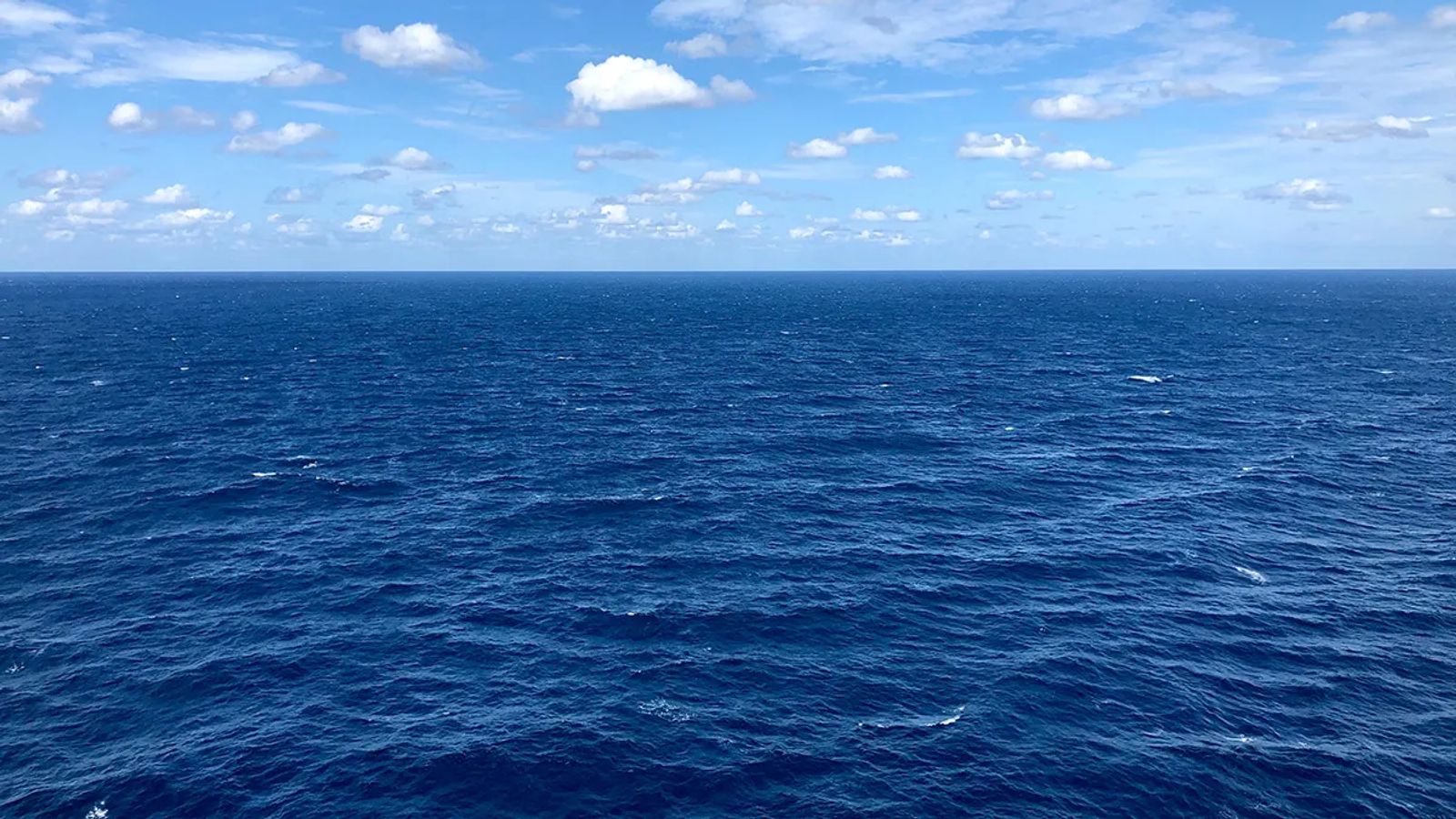
Comprising 106 million square kilometers, the Atlantic Ocean links Africa with Europe at number two. From Viking expeditions to contemporary shipping lines, this ancient avenue is open for exploration and trade. Average depth is 3,656 meters; the Puerto Rican Trench drops to 8,486 meters. A 16,000 kilometer underwater mountain chain, the Mid Atlantic Ridge separates it and creates fresh seafloor. While currents like the Gulf Stream affect climates, marine life thrives whales, sharks, and cod. Among the top 10 oceans, its great size and connection rank it highly, a titan in ocean statistics and measurements.
1. Pacific Ocean, 165 million square kilometers
Toping the list, the Pacific Ocean rules over 165 million square kilometers, about half of all the ocean water on Earth, and 28% of the planet’s surface bigger than all land combined. Covering the Arctic to the Southern Ocean and Asia to the Americas, it is a titan. Though its average depth is 4,280 meters, the Mariana Trench, at 10,911 meters, is the lowest place on the world. More than any other ocean, it boasts 25,000 islands; its Ring of Fire causes quakes and volcanoes. Here fish, whales, and coral reefs thrive, therefore transforming this area into a biological powerhouse. Unmatched size guarantees Pacific’s status as the biggest ocean on Earth.

